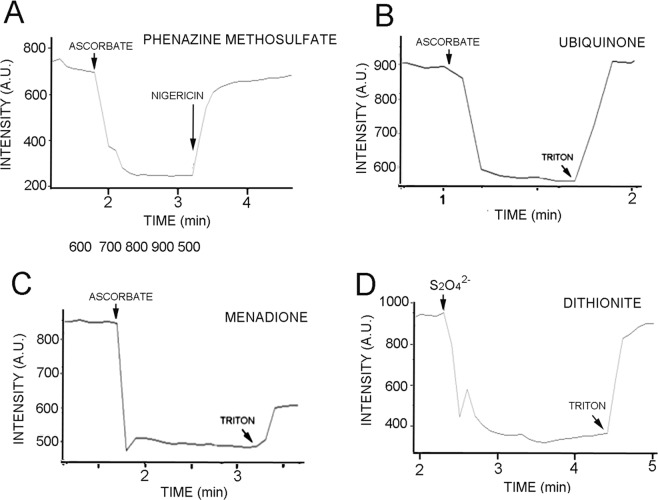Figure 3.
(A) Phenazine methosulfate was tested for its ability to produce a proton gradient across a liposome bilayer. The addition of ascorbate had no effect on fluorescence unless phenazine methosulfate was added to the mixture. The addition of ascorbate then caused fluorescence to become quenched by 72%. Quenching was reversed with the addition of nigericin, an antibiotic that allows proton gradients to equilibrate with potassium ions in the medium. As controls, ubiquinone and menadione (B,C) were used to test whether insoluble quinones could become embedded in lipid membranes during liposome preparation and function as electron carriers. (D) Demonstrates that sodium dithionite, a reduced sulfur compound, could also serve as a source of electrons in the system. In this case, PMS had already been added to the system to serve as an electron carrier.

